by André
On the 8th of November, as part of the celebrations of the 130 years on the City of Maputo, the Municipality organized a public event about sanitation. The day included a presentation about the city-wide sanitation Masterplan and a field-trips throughout the city.
The presentations
It was an early start at the Municipality’s head office for what would be a long and interesting day. Also, it was the first time I entered the building, which is very beautiful and well maintained, definitely worth a visit.
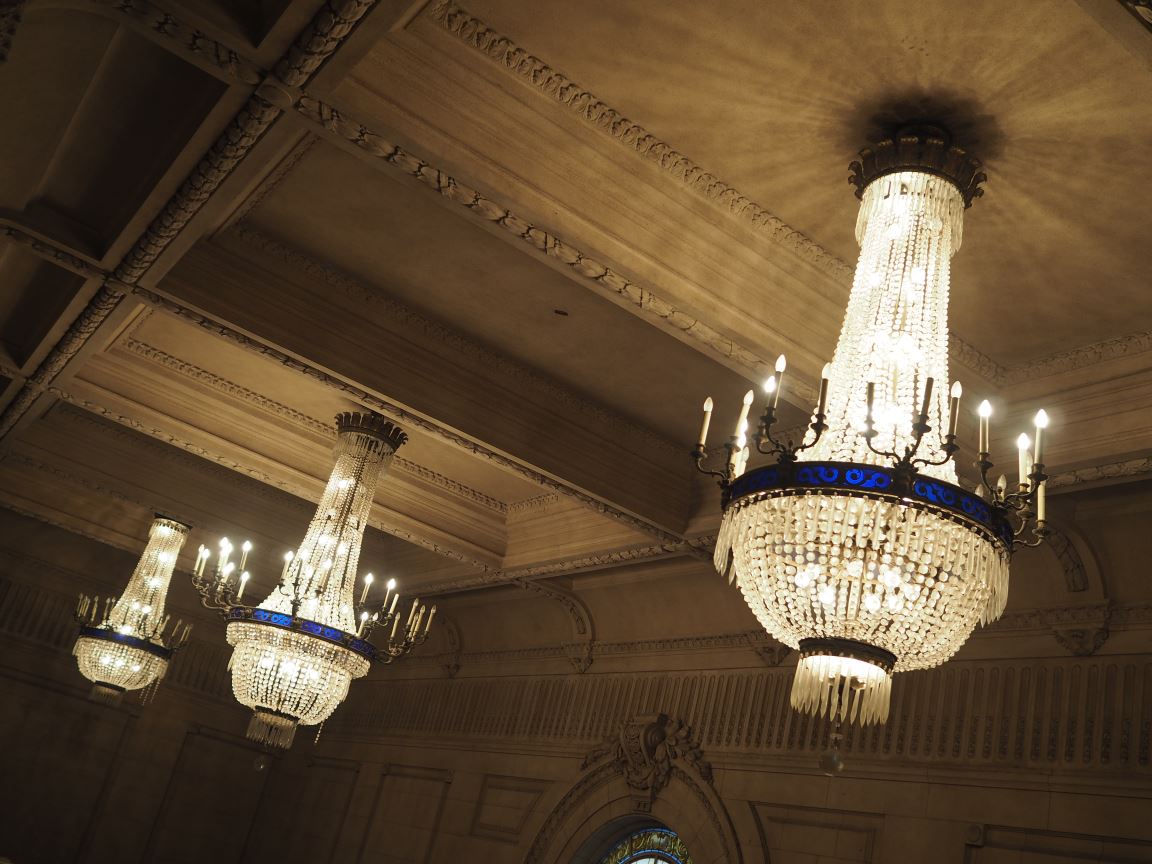
Art deco chandeliers at the Municipality.
The event started with a presentation given by Mr. Vitor Fonseca of the Municipality about the city-wide Masterplan. For me it was very interesting since despite knowing the document I had not seen it being publicly presented. I really found positive that Mr. Fonseca also mentioned the possibility of building and operating condominial sewers (more info here and here) which become cheaper for the household for population densities above 200 inhabitants/km2, as depicted in the following decision matrix. These systems can either be connected to a conventional (centralized) sewer system or to decentralized treatment plants, and, as I show in my forthcoming article, given the characteristics of the aquifers in Maputo and the reliance on groundwater for human consumption, this is the safest option to minimize groundwater contamination with Nitrate. If you want to grab a copy of Mr. Fonseca’s presentation please check GAS’ website – it was the same presentation as given by AIAS on the 31st of March.
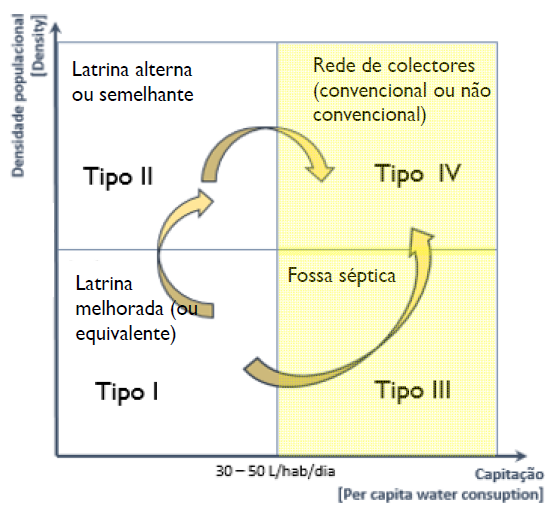
Decision matrix for sanitation infrastructure. Source: Presentation given by Mr. Vitor Fonseca.
This presentation was followed by a lunch and field-trips, first to the wastewater treatment plant (WWTP), then to a couple of WSUP-funded projects, including a drain and a couple of shared sanitation facilities. Finally we visited several blocks (Bairros da Munhuana Mikadjuine) where is very difficult to build adequate domestic sanitation infrastructure due to high water table.
Visit to the wastewater treatment plant
Last time I reported a visited to the WWTP was in late 2014 with a few short visits since then. Despite the need for urgent actions (e.g. remove all the sludge and water hyacinths from the lagoons) I could also see clear improvements, a wall and gate for controlled access – something of the utmost importance – and paved roads for the trucks discharging faecal sludge into the anaerobic ponds – which makes it safer for truck operators to work. There’s still work to be done but it’s great to see that work is being done.
Visits to the neighborhoods
We then headed to visit a few neighborhoods throughout the city. We started with a visit to a drain built with the support of WSUP that has improved serious drainage issues in that area. This was followed with a visit to a few shared sanitation facilities some of which built with the revolving fund implemented by WSUP in Maputo. I have talked about the revolving fund here, this is what I wrote last time:
This fund works in the following way, with money made available by WSUP, a local CBO (usually at neighborhood level) offers a loan to a household to build improved sanitation infrastructure; at the beginning the loan was enough to build an improved latrine but the households tend now to favor the construction of septic tanks. The loan is only given after the CBO has evaluated in detail the capacity of the household to repay the debt. The household is then expected to pay the loan throughout 12 months. The loan is interest free and the CBO makes money by keeping construction costs low, through economies of scale, e.g. acquiring the construction materials for several systems at the same time.
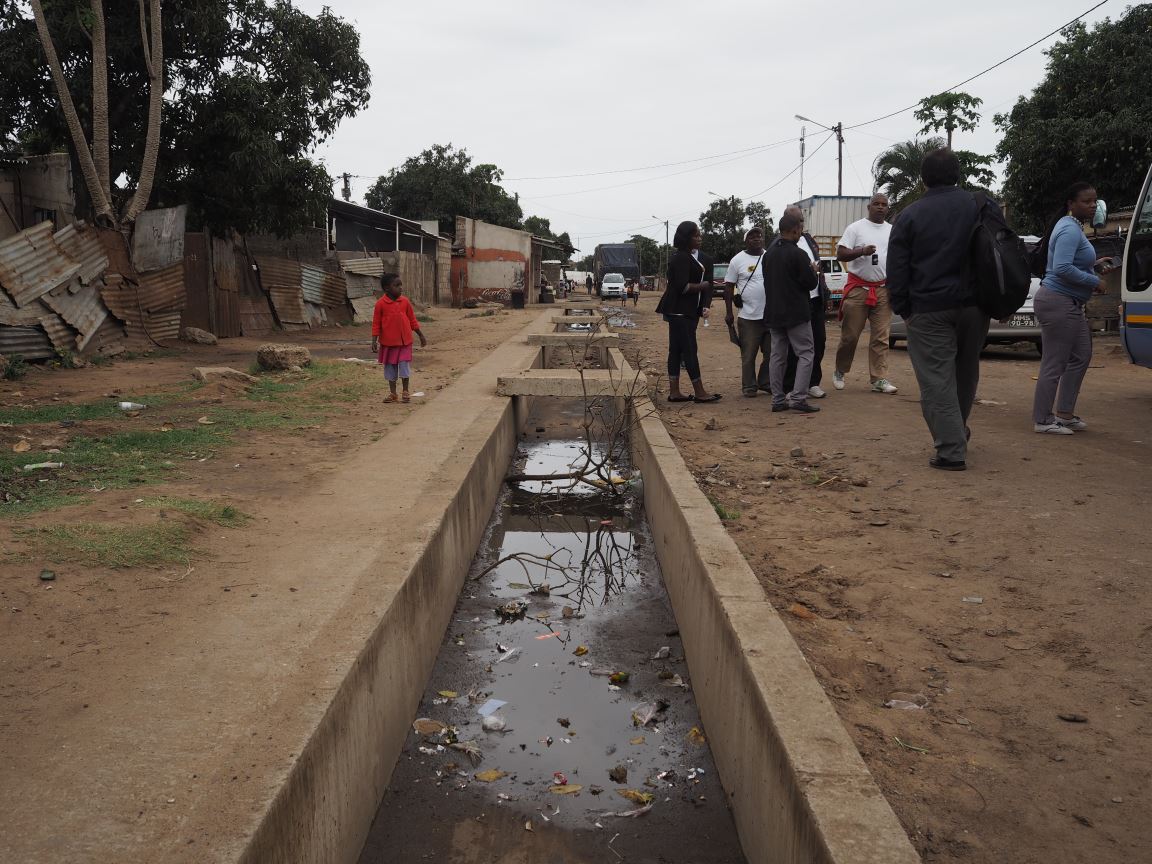
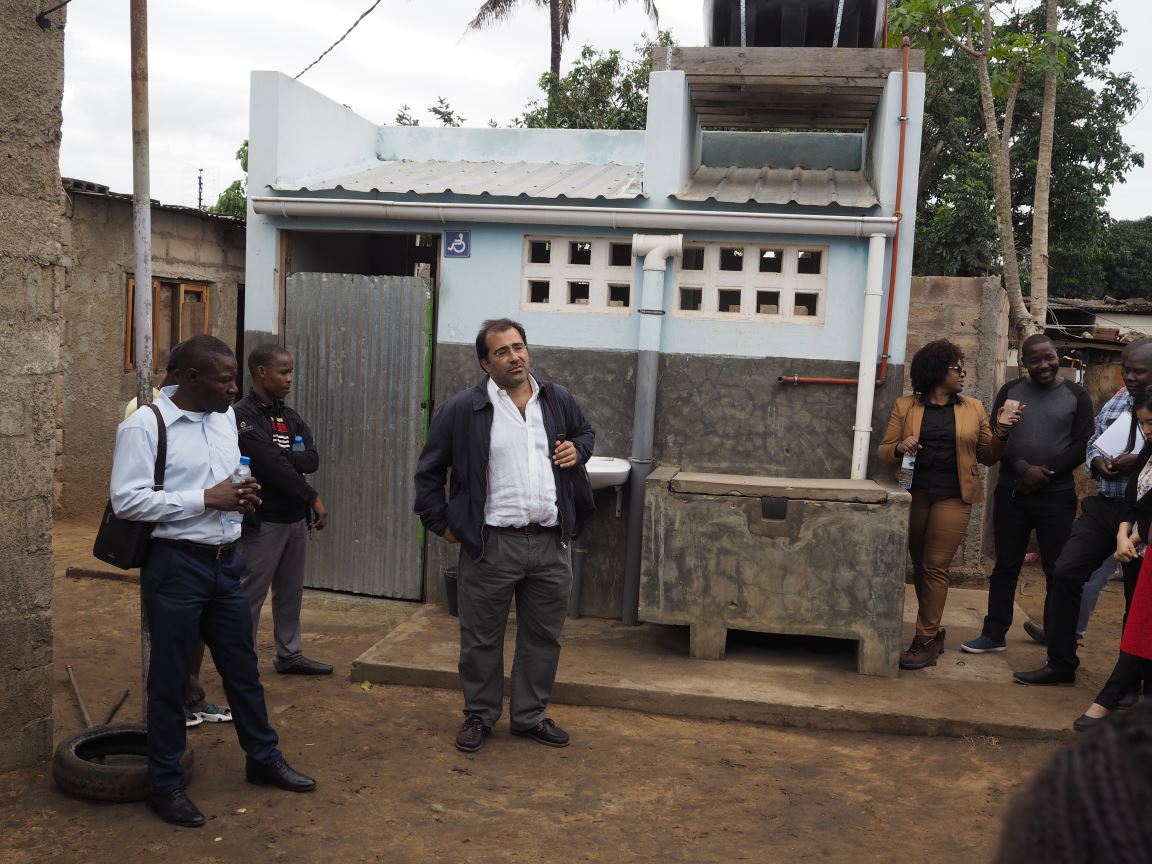
Some of the WSUP-funded projects that we visited: a drain and a sanitary block.
To end the day the Municipality took us to a few neighborhoods where a high water table does not allow infiltration of onsite sanitation systems content and creates serious health issues, you can see this in the pictures below. I believe that these should be the first options for condominial sewers (see above).
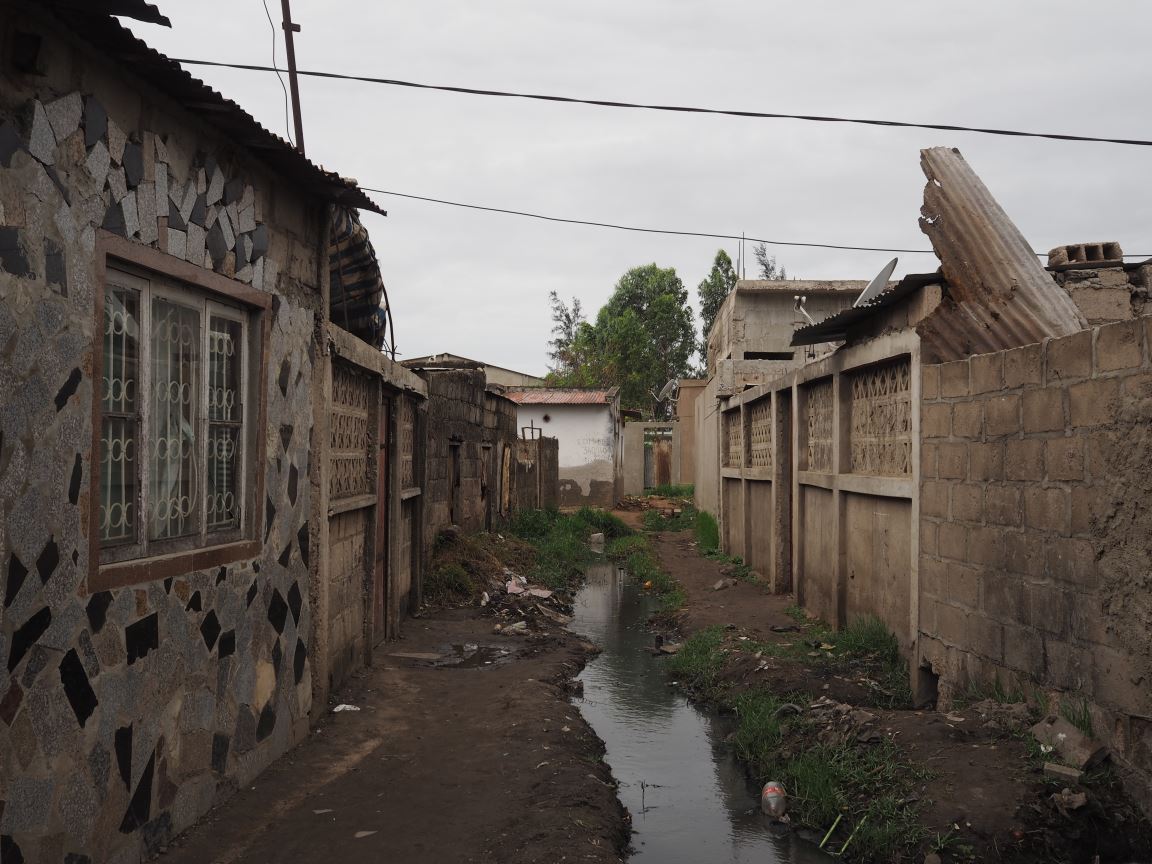
The neighborhood of Mikadjuine – the high water table makes it very difficult to build onsite sanitation systems, including septic tanks.
Bottom-line
Attending a public presentation for the masterplan was certainly a highlight for the day – I’ve read so much about the project and it’s great to see it coming out of the paper and being publicly presented and defended. I know that much funding is necessary to implement whole plan but I believe that with enough government commitment, including the implementation of the sanitation fee, and external support, this will become reality in the defined time frame (until 2040). Regarding the field-trips, it was not my first time but it’s always great to visit these areas as you see, first-hand, what is being done to improve the livelihoods of these people. Finally, I would like to thank the Municipality and WSUP for giving me the opportunity to be present.




















